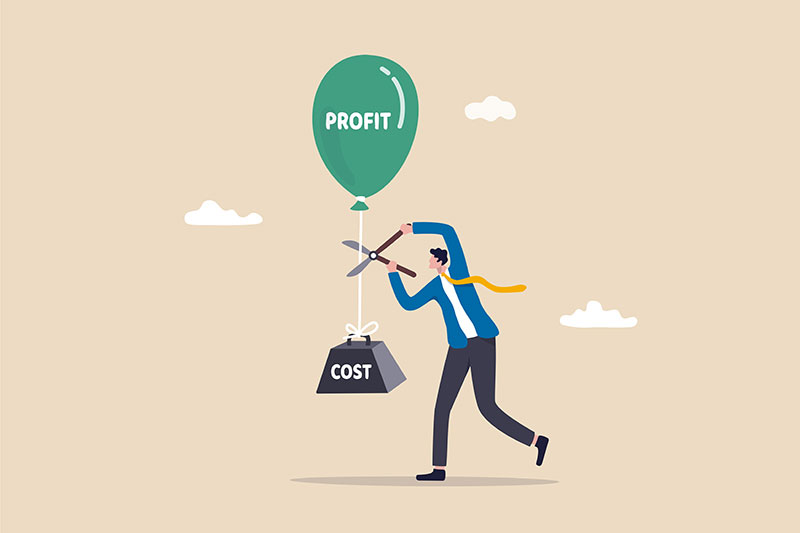How Much Should You Mark Up Your Product Price as a Wholesaler?
If you’re wholesaling, you may be wondering how much to mark up your product price? And what your wholesale product profit margin should be? When wholesaling products, your goal should be to make the most money possible without sacrificing sales volume by pricing your goods too high. While there are no steadfast rules to follow, here are some tips to help you determine the best wholesale product price and profit margin for your wholesale business.
1. Determine your wholesale product cost

To determine your product price, you first need to calculate your wholesale product cost; this is essential in figuring out what to charge your retail customers. The more you mark up your price, the higher your profit will be – but also keep in mind that it will also be more challenging to sell and harder for retailers to justify paying such a high price.
Before you start making wholesale transactions, determine how much money you need to turn a profit and determine your cost of goods by adding up all your direct costs related to sourcing and selling your product. This includes labour, packaging, and any associated overhead.
Labour is the number one cost that generally gets forgotten about, common among sole traders and individuals that hand makes products. It is essential to factor in labour – the time it takes you to make each product. Even if you were to purchase products from a manufacturer, the cost that you have to pay for each item has been calculated with labour included; otherwise, all businesses will be running at a loss and eventually go out of business, which is something you don’t want to happen.
2. Calculate your wholesale product price or selling price

After figuring out your wholesale cost, you’ll want to calculate your wholesale product price. To do so, add 20 percent or more on top of that number so that when selling products wholesale, you’ll still earn some kind of profit per item sold.
The standard mark-up is usually 50% – 100%. However, certain products such as jewellery tend to have a higher profit margin.
Alternatively, you can determine the retail price first to figure out your wholesale price. We will go into more detail on retail pricing a little further down.
When in doubt, start with a higher percentage rather than a lower one. For example, if you wholesale a product for $8 and your target retail mark-up is 200% ($24), charge $12 instead ($8 x 1.5). If items sell slowly, you can always lower your prices or offer discounts to attract retail buyers; but if they sell too fast due to the price being too low, it will make it harder for you to keep up with demand, and there won’t be much wiggle room to increase prices later on.
It’s important not to undercut yourself. Having similar wholesale margins and product prices makes buying easier for customers who know they won’t have to compare different suppliers. This will increase sales and profits for all retailers. Always focus on making sure that what customers are paying is fair market value – you never want them feeling like they got ripped off!
3. How to calculate the retail price for your wholesale products?

Calculate the retail price for your products or what you believe your retail customers should be selling your products for. The standard mark-up is usually 100% of the wholesale product price. This means if a wholesale item is $8, then the retail product price will be twice that – $16.
Whatever your wholesale price is, keep in mind that retailers need to sell that item at a specific price point to make a sustainable profit.
A good rule of thumb is to look at what others are charging for similar products or services and see how close you can get while maintaining a healthy profit margin.
Remember: If you sell a product for more than it’s worth, people won’t buy it. This applies to both wholesale and retail pricing. As with most pricing issues in business, finding that sweet spot is crucial for long-term success.
Should wholesalers set recommended retail prices on wholesale products?

Although recommended retail price (RRP) is not enforceable by law in Australia, it’s a good idea to set RRP on your wholesale products as a guide for the following reasons.
- Retailers will have a guide to go by when setting their retail product prices.
- Having an RRP can promote certain standards for your brand image.
- Encourage fair retail pricing of your wholesale products among stockists and lessen the chances of retailers undercutting each other.
- Having an RRP can help retailers determine the suitability of your products within their retail store based on price point. For example, if a retailer has an average price point of $50 in their store, then stocking a product with an RRP of $200 is most probably not going to work well with their current product range.
Having no RRP on wholesale products is an open invitation for retailers to set whatever retail price they see fit for their business. It’s important to protect your brand image however possible. Wholesalers may not be able to tell retailers what they can and can’t do in their business; however, having a recommended retail price will work as a guide for retailers within your distribution network and help your brand image.
Remember to use your RRP as a guide. Wholesalers can not force or put pressure on their stockists to sell products at a set price. The best way to encourage RRP is to give informed information so your retailers can develop the best price possible for your wholesale products and their retail business.
Conclusion
The type of your wholesale products and the cost price for each item will determine your wholesale mark-up. When calculating the wholesale product price, remember to set fair pricing. You don’t want to make it too low as you need to make an adequate profit margin after all expenses are considered. However, setting an overly higher price will work against you and likely push away retail buyers.
Setting an ideal pricing strategy can be tricky for first-time wholesalers as you try to navigate through what works and what doesn’t. However, with a little bit of research and some calculations of product costs, you will be able to determine the correct wholesale pricing for your wholesale products.





